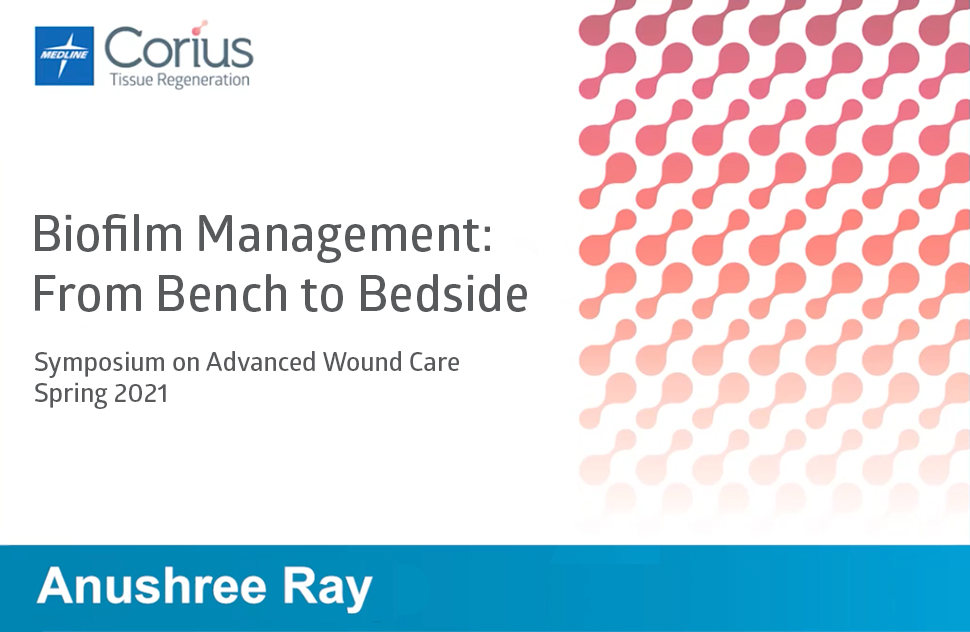Wound care hot topics: 6 key takeaways from SAWC Spring 2021
Venous leg ulcers, innovative wound care dressings, telehealth and more.
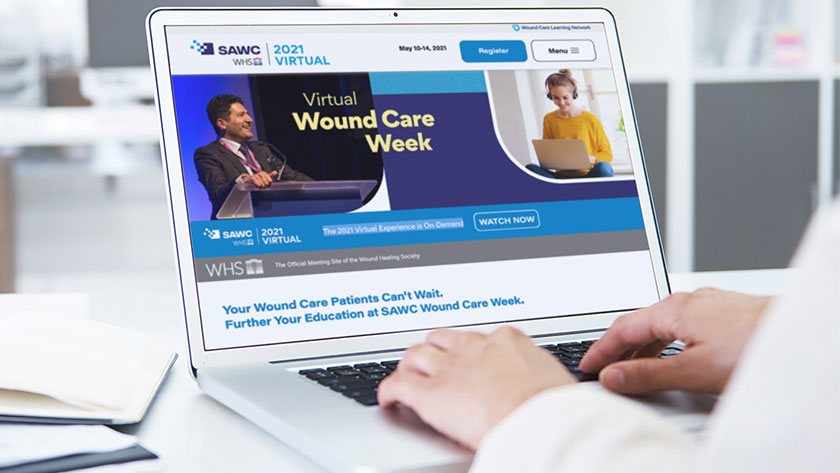
To paraphrase a well-known expression, the advanced wound care show must go on. SAWC Spring 2021 did go on—virtually. Dozens of skin and wound care experts hosted sessions, presented posters and recorded talks on topics ranging from diabetic foot ulcers and pressure injuries/ulcers to biofilm and telehealth.
Maybe you couldn’t make the conference or you were busy assessing a patient’s wound on your digital platform and missed a session. No worries. Our clinicians rounded up 6 of their favorite SAWC themes that were covered during the week-long event.
1 | Venous leg ulcer standard care
As part of the series of conference lectures on lower extremity wounds, this session focused on standardizing care for patients with venous leg ulcers, and how to prevent their recurrence.
Medline Clinical Education Specialist, Acute Care-Skin Health, Kristin White, RN, BSN, CWON, commented, “Lack of standard care for chronic venous insufficiency (CVI) can lead to hospital readmissions and worsening of the disease.” She stresses the importance of a holistic approach to managing CVI, including compression therapy, leg elevation, weight management, patient education and patient compliance.
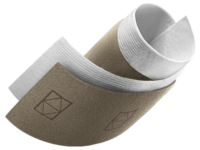
2 | Biofilm-based wound care
Why is bacteria in biofilm so hard to kill? It’s one of the questions addressed in this recorded webinar between Dr. Gregory Schultz, Emeritus Professor, University of Florida, Gainsville; and Dr. Mark Melin, Medical Director, Wound Healing Institute, University of Minnesota, Plymouth.
As a growing body of research shows that biofilm affects wound healing, Dr. Melin goes so far as to say, “You have to assume every chronic wound you work with has a biofilm component.” In the webinar, they describe biofilm, how to identify it and effective management strategies to fight it. They also touch on several innovative tools and products, including PluroGel Burn and Wound Dressing and IoPlex Iodophor Foam Dressing.
The best part is, you can still access the webinar to learn more about biofilm.

3 | Supporting wound healing with proper nutrition
Led jointly by a registered dietician and a clinician, this forward-thinking session explored the scientific and clinical reasons why nutrition should be part of a holistic approach to wound care. “Nutrition plays an important role in the prevention and treatment of wounds,” White agrees, adding, “Studies have shown that adequate protein, calories and vitamin intake is essential in wound healing and the prevention of pressure injuries.”
4 | Ingredients that work harder to help manage MASD
In collaboration with Rosemary Hill, BSN CWOCN WOCC (C), Vancouver Coastal Health, Lions Gate Hospital, North Vancouver, Medline presented several posters showing that there’s a better way to fight MASD and shield patient skin from breakdown. The specific product Hill uses in her case studies is Marathon XL, a cyanoacrylate-based liquid skin protectant (CLSP), which outperformed solvent-based products in her case studies. You can access the three posters to see Hill’s results that came out of working with patients with incontinence associated dermatitis, peristomal skin irritation and skin tears. Download the posters
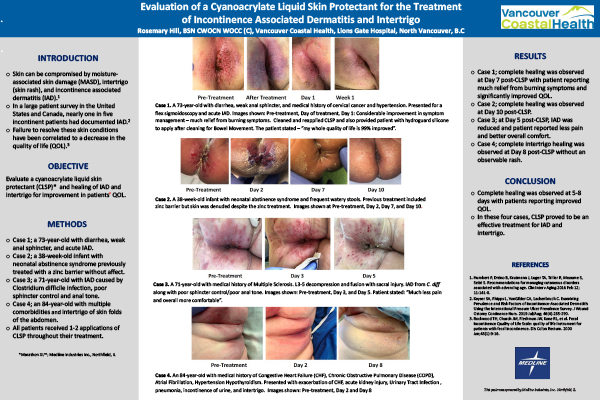
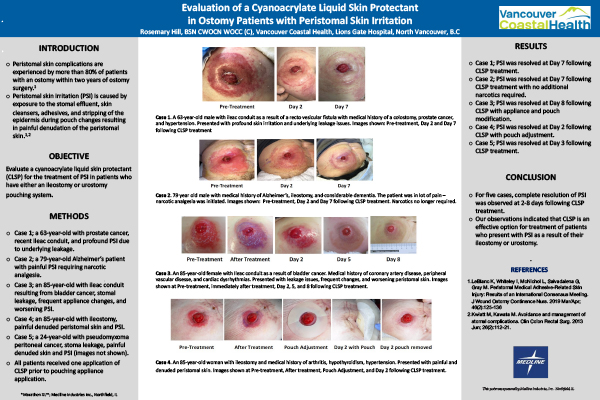
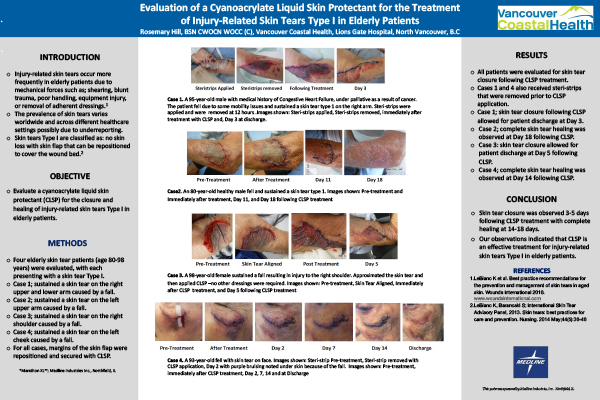
5 | Telehealth for wound care beyond COVID-19
It came as no surprise when the speakers in this session pointed out that virtual services are here to stay. And in some ways, the pandemic provided the push some facilities needed to improve their understanding of the technology and how to use it most effectively. Read more about wound care via telehealth, and its impact on patients and caregivers.
6 | Preventing pressure injuries with the right dressing
According to NPIAP guidelines, pressure injuries most often occur at the sacrum. As part of a pressure injury prevention protocol, clinicians frequently use multilayer dressings to help redistribute pressure. Choosing the right multilayer dressing can be challenging, though, because there are very few in vitro tests that accurately measure a dressing’s pressure load. Medline’s medical affairs team presented a poster at the conference that shows results from a test measuring pressure redistribution on three different dressings. See the entire study by downloading the poster.
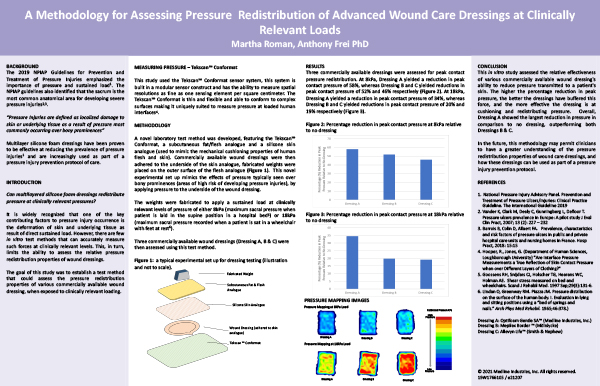
Key takeaway
Providing best-in-class skin and wound care has been challenging during the pandemic. But SAWC continued to provide insightful and cutting-edge information on important topics that can help you improve patient outcomes. Keep abreast of upcoming SAWC events.
Read more about skin and wound care:
How to distinguish a venous ulcer from an arterial wound
Watch the webinar–Lower extremity wounds: venous leg ulcers
Biofilm in chronic wounds: take a step down, step up approach
How telehealth affects you and your wound care patients today and beyond COVID-19
Five-layer foam dressing: how this innovative technology helps you care for wounds
